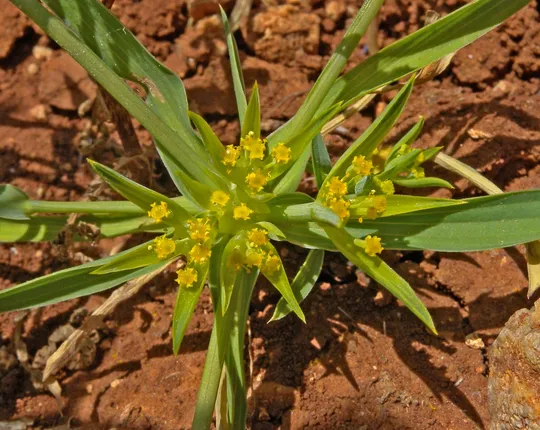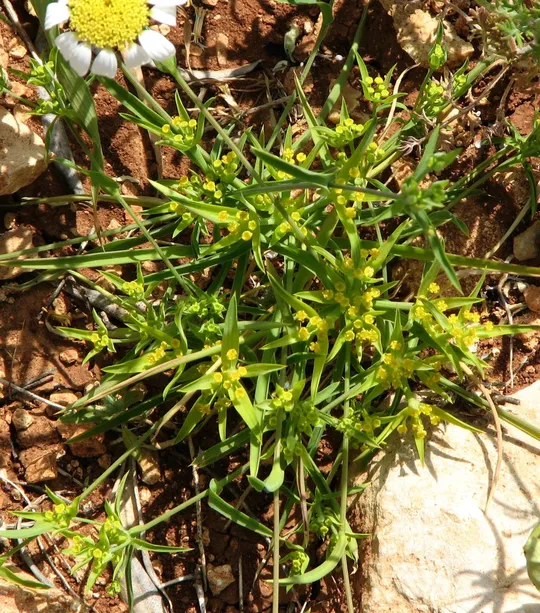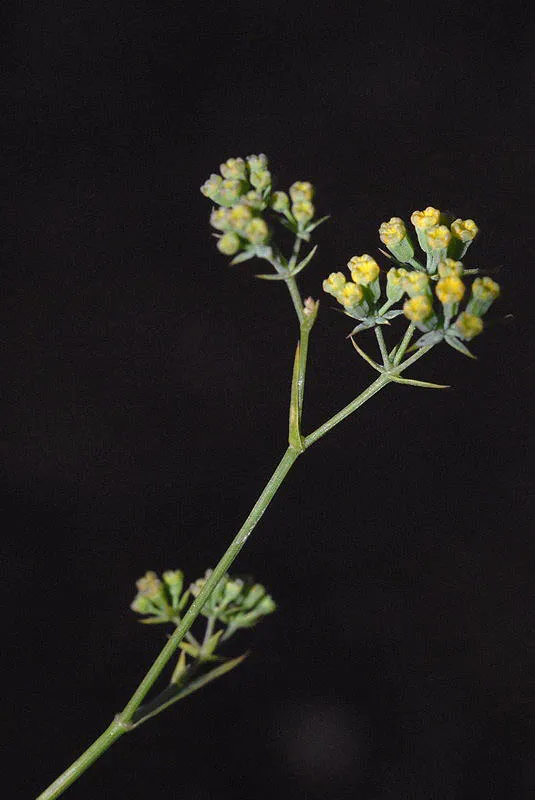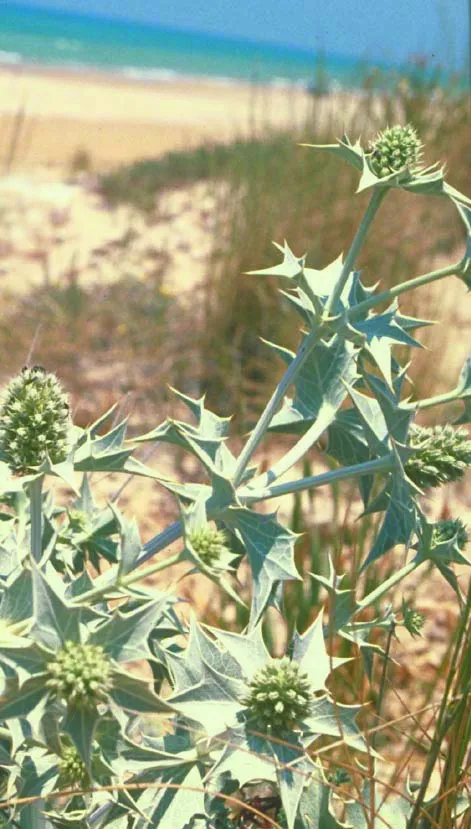Short-stemmed Hare's Ear
Bupleurum brevicaule


Bupleurum brevicaule now grows in
four regions: the Gilboa, Samaria, Samarian Desert and the Golan Heights. The
number of recorded sites is six, although there may actually be about ten
sites. In the Gilboa it is known only from the area of Jilbun. In the southern
Golan Heights, it now grows only in Ahu Nov and has disappeared from the
vicinity of Afik and from Hamat Gader. In recent years, it was found in a
number of sites in eastern Samaria: Ofra, Keida
and Anabta. In the Samarian Desert, it was observed on Mount Tamon and in
Rimonim. B. brevicaule was previously collected and
also seen in the Lower Galilee (Kfar Tavor, Kfar Kama) and in the Jezreel
Valley (Afula, Balfuria), but is now extinct in these regions.
Deep soils in traditional cultivated agricultural and
fallow fields. In the Flora of Turkey, it is noted in similar habitats, as well
as on stream banks and other sunlit dry habitats.
For the genus – see Bupleurum orientale.
B. brevicaule
belongs to the section Glumacea, whose species are annuals and have
characteristic linear-lanceolate leaves and membranous glume-like bracteoles that
are longer than the flowers. B. nodiflorum
is another species in this section that grows in Israel; it is a very similar
species and very common in the Mediterranean and transition zone fields. It is
distinguished by its bracteoles that have white membranous spaces between the
veins. B. nodiflorum
usually grows in extremely similar habitats to those of B. brevicaule.
B.odontites, another species in this section,
is a delicate, relatively rare plant, characterized by a thin erect stalk and bracteoles
with pinnate veins. Despite its rarity, it grows in habitats that are not
threatened and thus does not meet the criteria for being included in this book.
·
The significant decrease in the number
of regions and sites where Bupleurum brevicaule grows is evident: of five regions in
which it previously grew, only three remain today.
·
The species grows in traditionally cultivated
deep soils and the transition to modern agricultural methods is probably the
cause for its extinction in the Jezreel Valley and the Lower Galilee. Similar
processes may also lead to local extinctions in other regions where the plant
grows today.
·
B. brevicauleis not protected in
a nature reserve.
·
The species is apparently not globally
endangered.
Small population
patches in traditionally cultivated heavy soils should be demarcated and subject
to long-term monitoring. Attempts should be made to locate areas that include
additional species distinctive of this characteristic habitat and declare them
protected areas, to represent the unique vegetation of the habitat.
Bupleurum brevicaule is a species of
the Eastern Mediterranean transition zone and eastwards, in arid and colder
areas. It grows in eastern Turkey, Syria, Jordan and Israel.
Bupleurum
brevicaule
is a small annual plant of traditionally cultivated fields with heavy soils.
The species is rare in Israel, growing only on a small number of sites whose
number is declining. Its habitat is sensitive to possible changes in cultivation
methods and to the conversion of fallow fields to modern agriculture.
Current Occupancy Map
| 1000 squre meter pixel | 5000 squre meter pixel | 10000 squre meter pixel | |
|---|---|---|---|
| number of observations | 0 | 0 | 0 |
| in total pixels | 0 | 0 | 0 |
| Family | Apiaceae |
| Classification | On the endangered species list |
| Ecosystem | Mediterranean |
| Chorotype | Eastern Mediterranean |
| Conservation Site | Esh Kodesh Valley near Keida in Samaria |
| Rarity |
1
3
6
|
|---|---|
| Vulnerability |
0
3
4
|
| Attractiveness |
0
0
4
|
| Endemism |
0
0
4
|
| Red number |
1
3.7
10
|
| Peripherality | 0 |
| IUCN category | DD EW EX LC CR EN VU NT |
| Threat Definition according to the red book | Vulnerable |
 Based on:
Based on:






